The creeping cinquefoil weed, with its cheerful yellow flowers, initially seems like a charming addition to your garden bed.
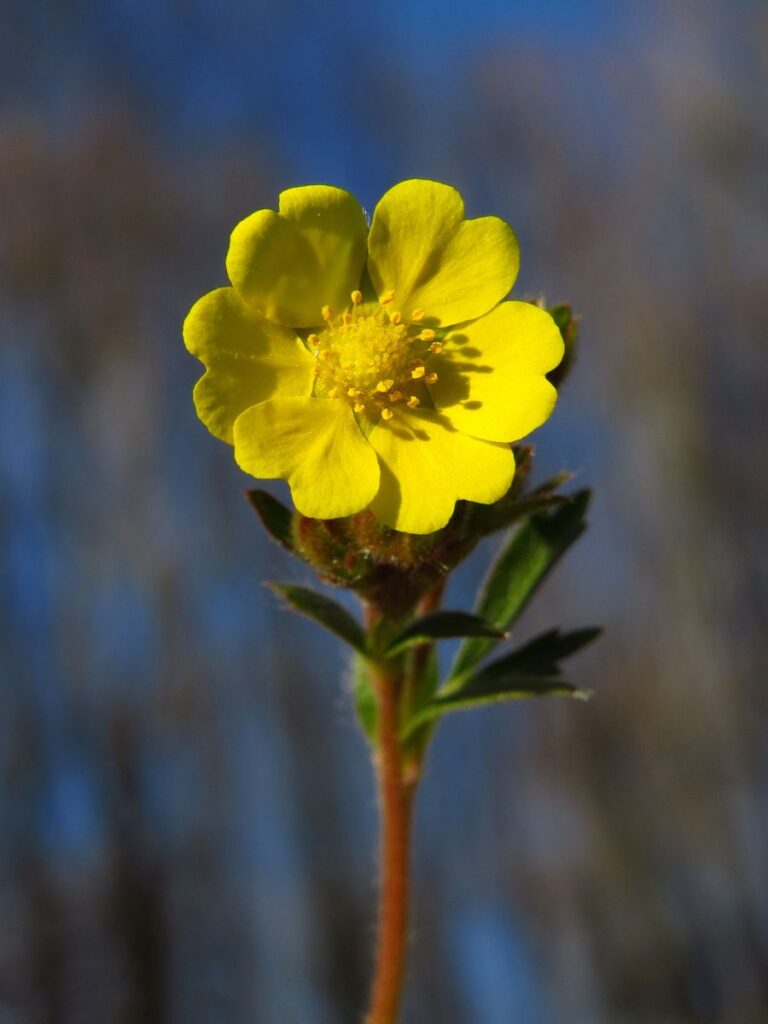
However, its invasive nature can quickly become a threat to your efforts to sow seeds or grow small plants.
If you’re grappling with this delightful yet sometimes troublesome plant, keep reading because this post is all about controlling them.
Understanding Creeping Cinquefoil Weed
Potentilla reptans, the Latin name for creeping cinquefoil, originates from “Potentilla,” the ancient name of the genus encompassing over 300 plant species, and “reptans,” signifying creeping or crawling, a fitting description for its growth pattern.
In my area, authorities actually allow creeping cinquefoil to grow along the riverside, adding a touch of sophistication to the scenery with their yellow flowers.
However, it’s a robust survivor that requires weekly pruning to keep it in check.
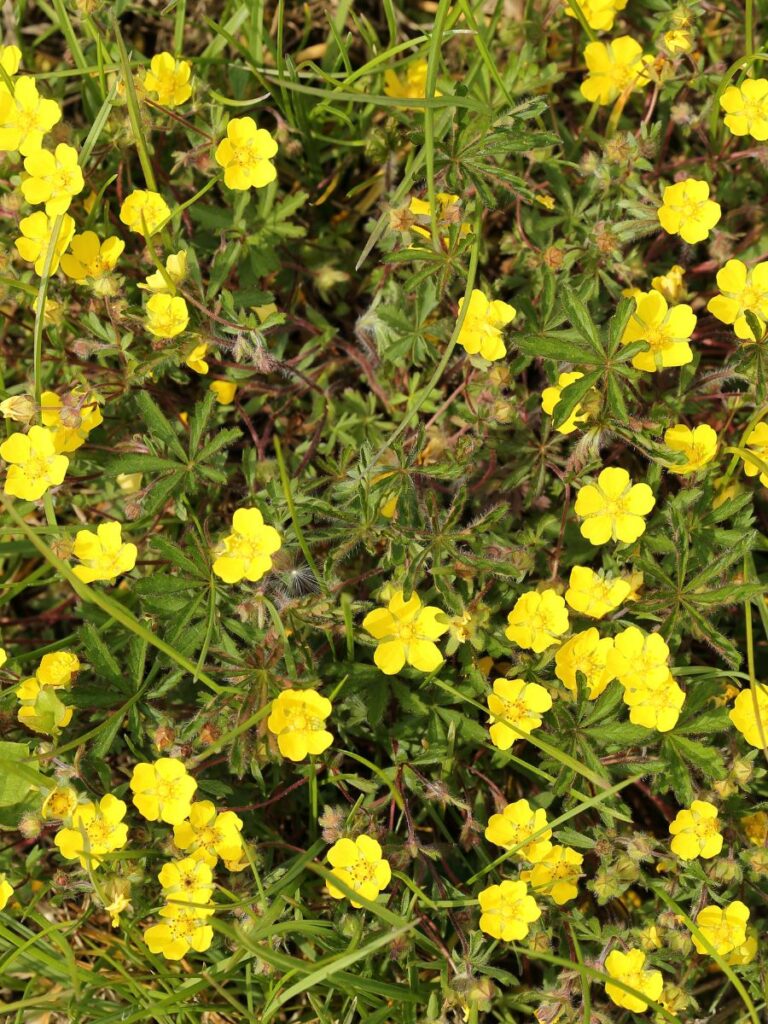
The plant can be considered beneficial when its taproots and runners are needed to stabilize sloping ground.
However, when I started noticing them prospering in my garden like a marching army against other plants, I knew I had to undertake the cruel task of putting them under control.
I should remind you that creeping cinquefoil may sometimes be mistaken for silverweed (Argentina anserina), as both produce yellow flowers with similar petal numbers and sizes.
However, the leaves are quite distinctive, with silverweed featuring long creeping red stolons and possessing medicinal properties.
Seasons and Habitat of Creeping Cinquefoils
Creeping cinquefoil is a fully hardy plant that thrives even in the cold winters of the UK.
It prefers full sunlight, which is why it often flourishes in lawns. However, it can still pose problems in shady areas.
The plant is adaptable to various soil types and becomes most visible in spring, leafing early after winter.
It’s often seen alongside Lesser celandine (Ficaria verna) during this time.
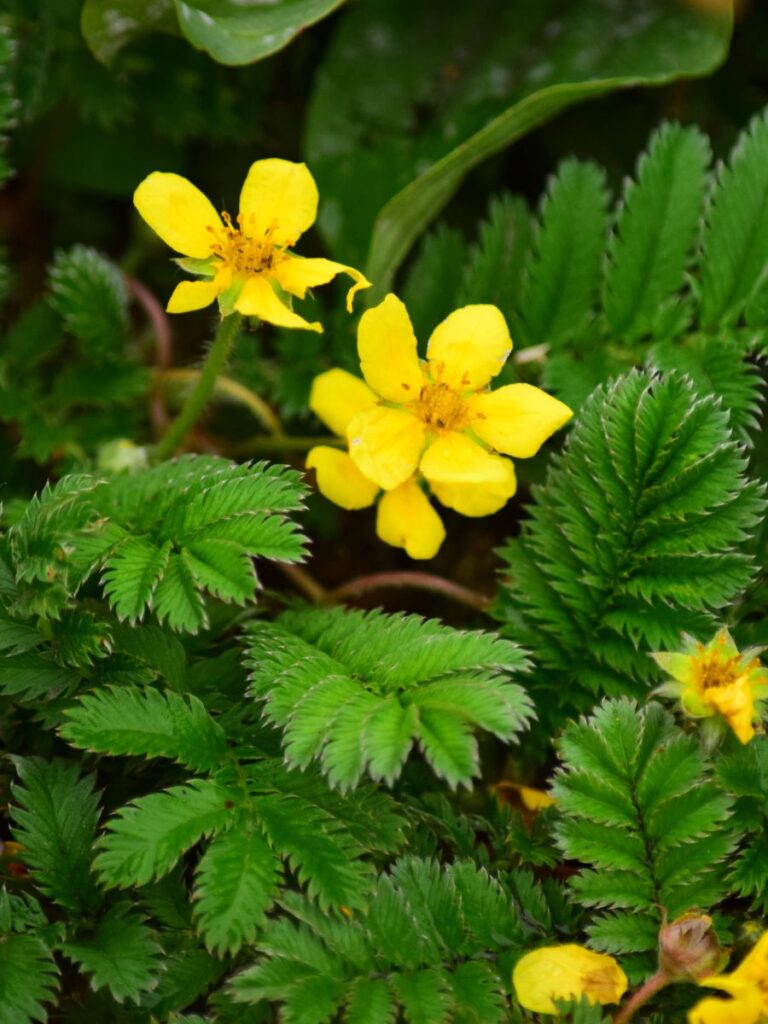
How to Identify Creeping Cinquefoil
Creeping cinquefoil leaves are rounded, hairless, and serrated, arranged in groups of five to seven from a single node at the end of a long stem.
This distinct leaf structure sets it apart from other common British lawn weeds.
During summer and early autumn, it produces bright yellow, heart-shaped flowers with five petals resembling flat buttercups.
The flowers, which measure 2-3cm wide, emerge from the leaf axils.
If left unattended, the flowers can reach heights of up to 50cm—an unusual sight in a lawn.
When To Be Concerned
Cinquefoil spreads rapidly through creeping stems and autumn seeding, often infiltrating lawns from flower beds and vice versa.
This tenacious weed competes with other plants for light, water, and nutrients, making it a challenge to control.
Creeping Cinquefoil, with its low-growing habit and ability to form dense mats, is commonly found in hedge rows, along banks, and in grassy areas.
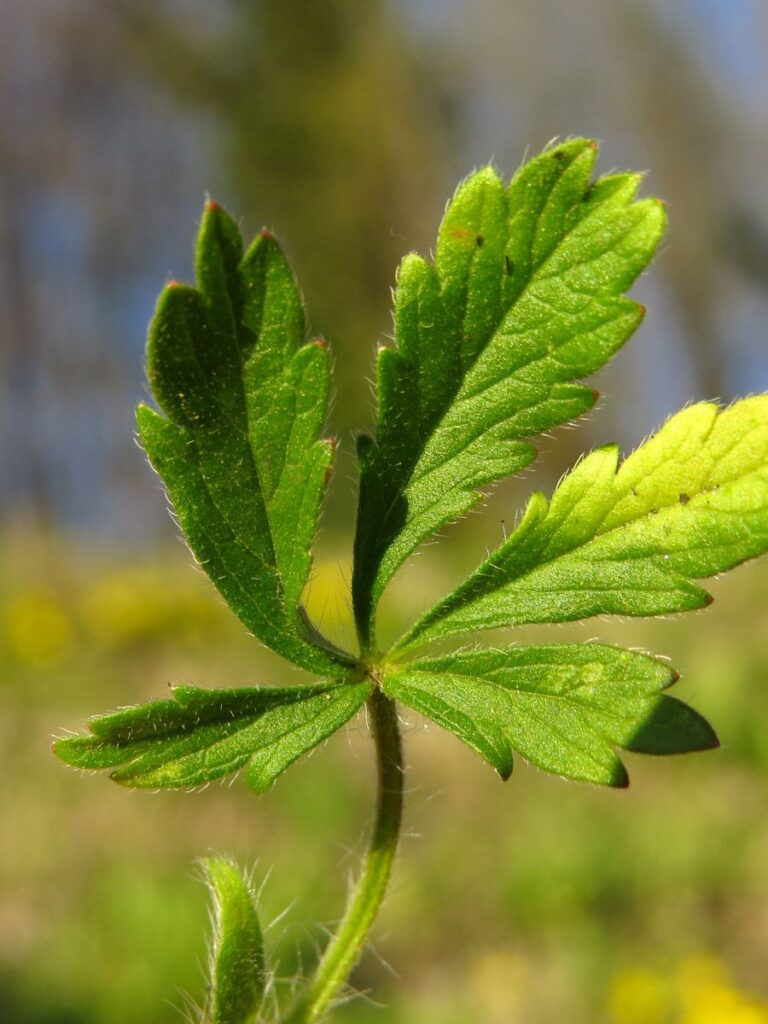
How to Control Creeping Cinquefoil
Use Your Hands
Thinking of pulling them out by hand? It’s a quick and straightforward approach, I know.
However, this method doesn’t guarantee complete removal of creeping cinquefoil from your soil.
New plants will keep sprouting from the remaining root systems.
Creeping cinquefoil also develops dark, thin taproots that can extend 30cm (1ft) into the soil.
Moreover, new plants can grow from sections of taproot or detached runners, making control more challenging.
If your goal is simply to reduce the weed’s population, manually removing them is sufficient.
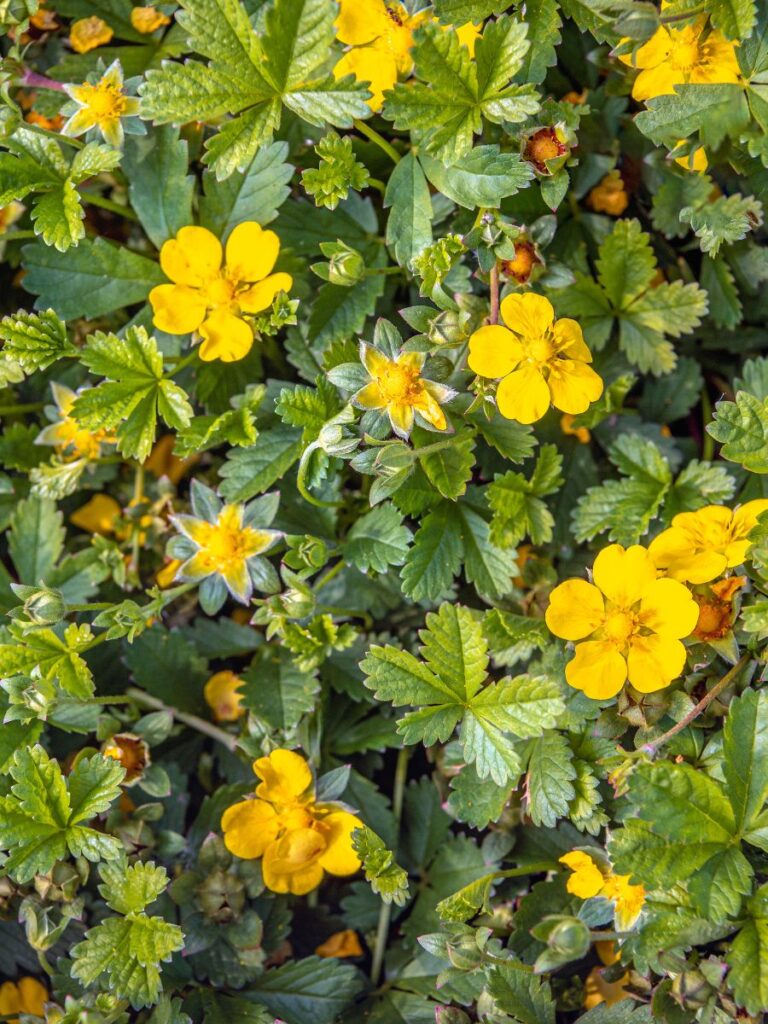
For longer-lasting results, though, I recommend removing the taproots and all root fragments. Here’s how I personally handle it:
- Water the soil beforehand to make it easier to work through.
- Use a wire rake to lift the weed.
- Apply mulch, such as well-rotted manure or wood chips, to suppress regrowth.
- The Royal Horticultural Society (RHS) suggests using tools designed specifically for weeding dandelions, and I must say, they’re a real time-saver.
Bury It
The RHS also recommends combating Creeping Cinquefoil by essentially suffocating the plant.
According to their advice, trim away the foliage and cover the soil with cardboard followed by a thick layer of organic matter, like bark or wood chips, about 20cm (8in) deep.
Alternatively, you can utilize a heavy-grade biodegradable mulch matting.
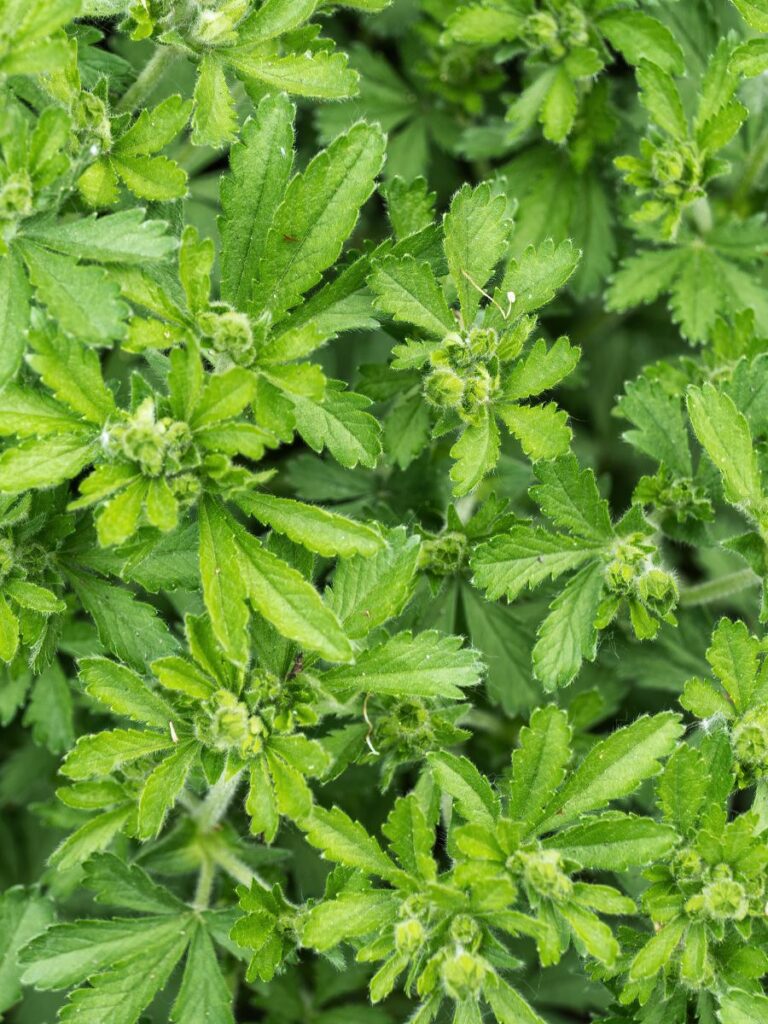
Sounds straightforward, doesn’t it?
But one drawback of this approach is that you might have to wait for years to see the smothering method yield results.
And let’s face it, a lot can happen during that time!
Besides, not all of us have the patience to wait for several years with our garden covered up.
Which brings us to the last resort, and I emphasize again, it should be a last resort.
When it comes to experimenting with chemical treatments, it’s akin to taking a witch’s potion – there’s almost always a high price you’ll have to pay.
Chemicals
If chemical intervention is necessary, systemic weed killers like glyphosate can be used as a last resort.
However, you will have to exercise caution to avoid harming adjacent plants.
You may consider wrapping them in plastic before spraying to minimize impact.
Remember:
- Using herbicides is often seen as taboo if you care about the health of nearby plants and want them to thrive.
- Similarly, if your intention is to clear the ground for new plants, it’s important to recognize that these chemicals won’t disappear quickly.
- Follow instructions strictly.
- For real results, you may need to apply herbicides more than once.
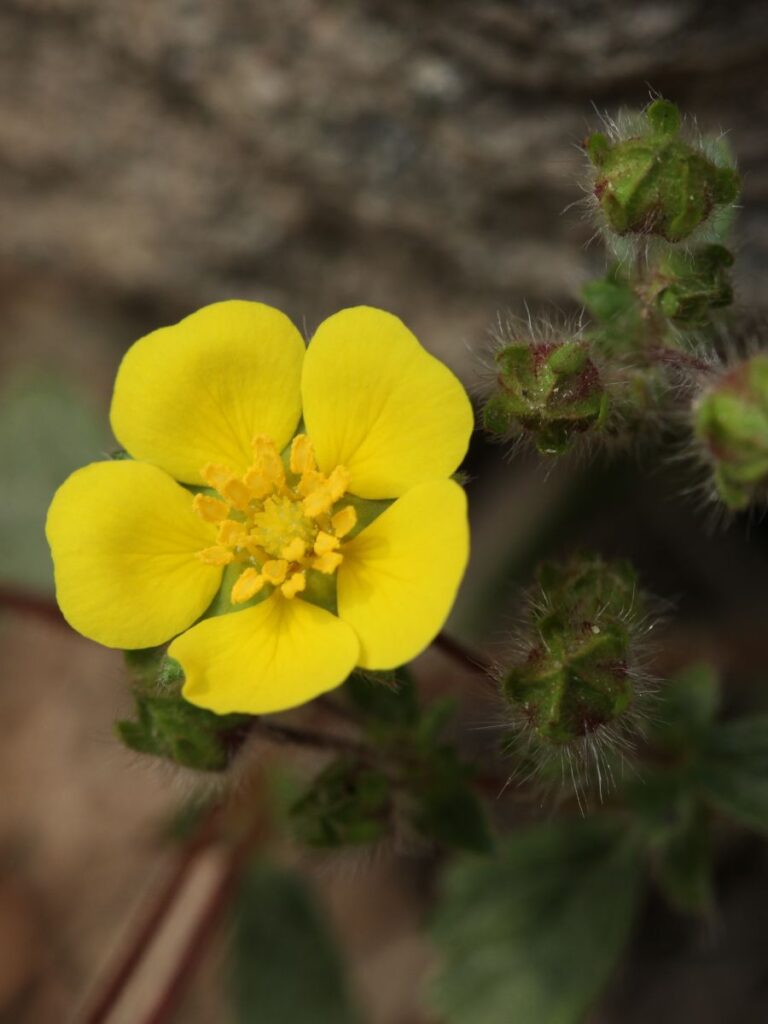
Controlling Creeping Cinquefoil Weed Recap:
- Regular weeding weakens regrowth and helps manage the issue. The plant does not thrive in moist, well-cultivated soil.
- In flower borders, annual mulching and soil improvement can deter cinquefoil and benefit other plants.
- In lawns, practicing good horticulture and regular feeding can prevent the problem from escalating.
- If the situation gets out of hand, professional herbicides are effective in swiftly regaining control.
- While chemical options exist, prioritizing manual removal and mulching aligns with sustainable gardening principles. Join the conversation in the comments below: Have you encountered Creeping Cinquefoil in your garden? Share your experiences and tips with the community.
Source: https://thelittle.garden
Category: Lawn care

